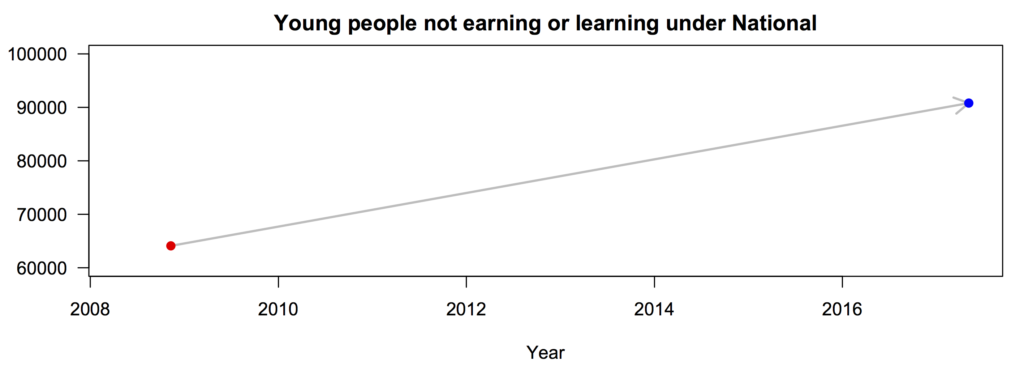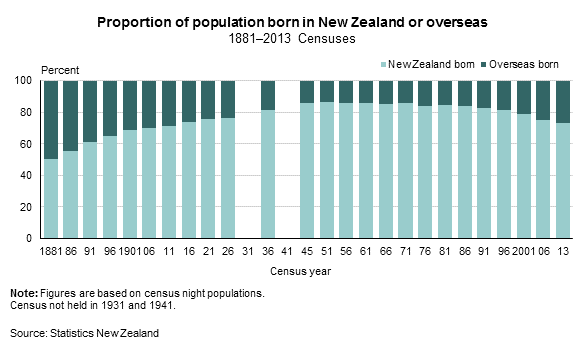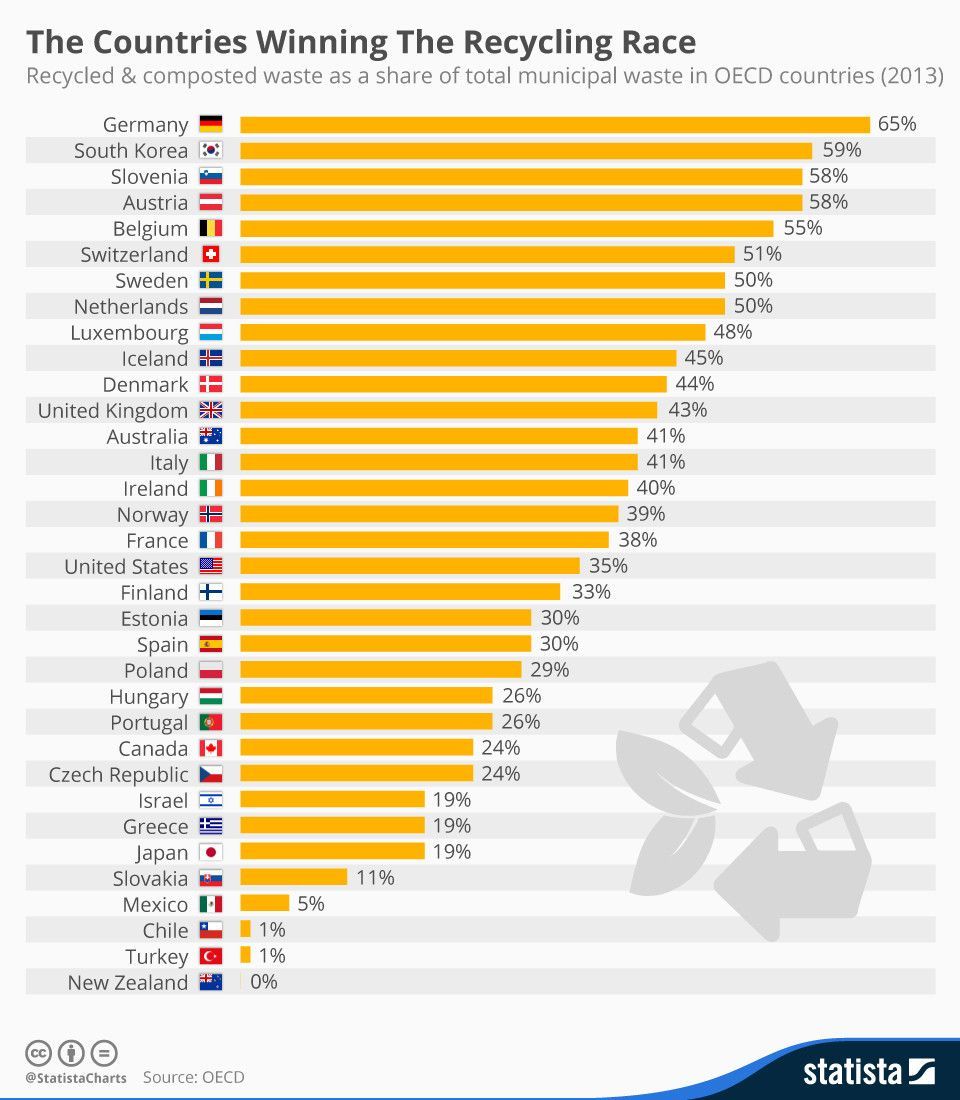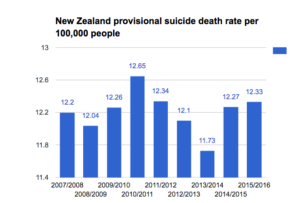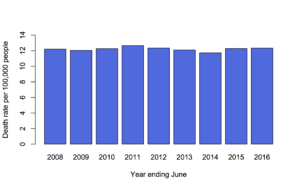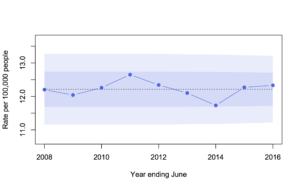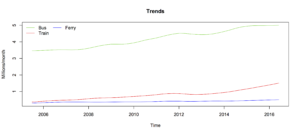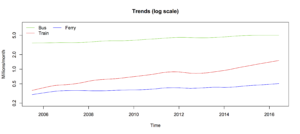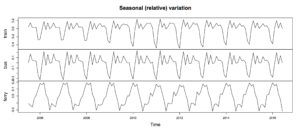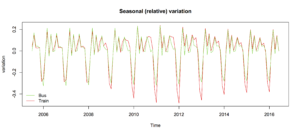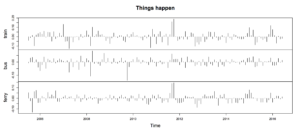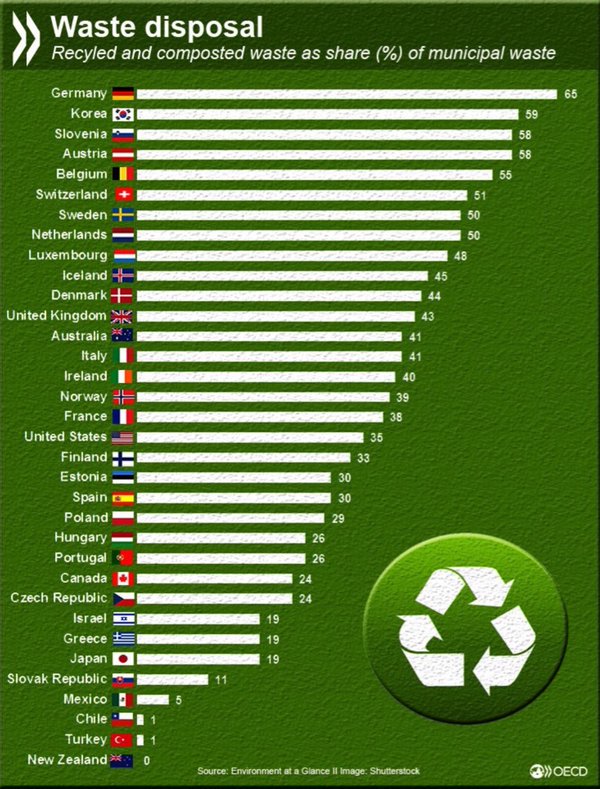Summarising a trend
Keith Ng drew my attention on Twitter to an ad from Labour saying “Under National, the number of young people not earning or learning has increased by 41%”.
When you see this sort of claim, you should usually expect two things: first, that the claim will be true in the sense that there will be two numbers that differ by 41%; second, that it will not be the most informative summary of the data in question.
If you look on Infoshare, in the Household Labour Force Survey, you can find data on NEET (not in education, employment, or training). The number was 64100 in the fourth quarter of 2008, when Labour lost the election. It’s now (Q1, 2017) 90800, which is, indeed, 41% higher. Let’s represent the ad by a graph:
We can fill in the data points in between:
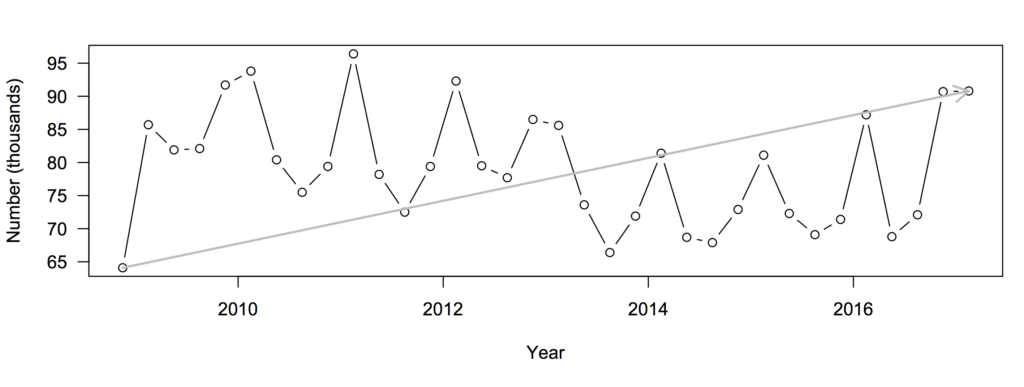
Now, the straight line doesn’t look as convincing.
Also, why are we looking at the number, when population has changed over this time period. We really should care about the rate (percentage)
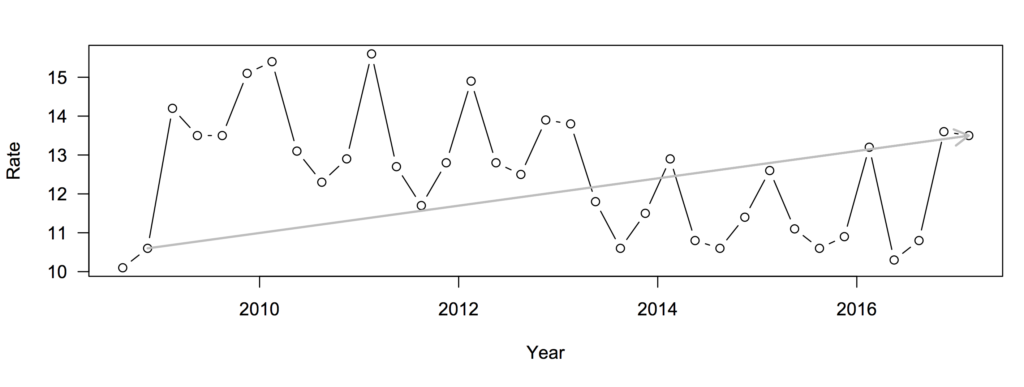
Measuring in terms of rates the increase is smaller — 27%. More importantly, though, the rate was even higher at the end of the first quarter of National’s administration than it is now.
The next thing to notice is the spikes every four quarters or so: NEET is higher in the summer and lower in the winter because of the school year. You might wonder if StatsNZ had produced a seasonally adjusted version, and whether it was also conveniently on Infoshare…
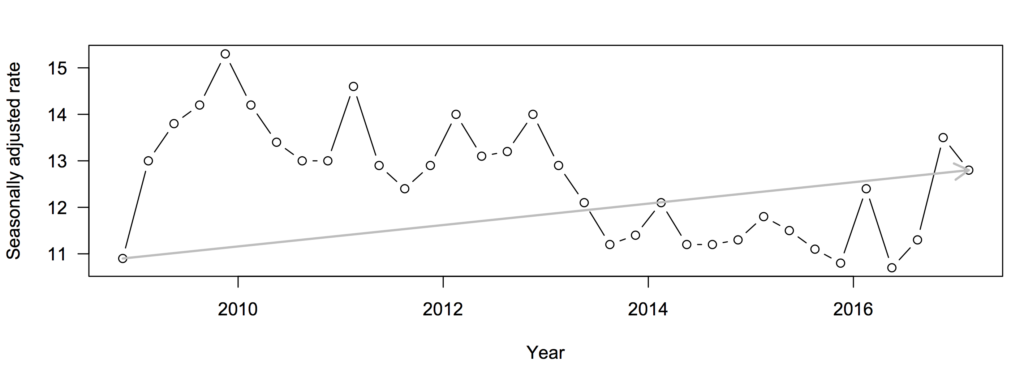
The increase is now 17%
But for long-term comparisons of policy, you’d probably want a smoothed version that incorporates more than one quarter of data. It turns out that StatsNZ have done this, too, and it’s on Infoshare.
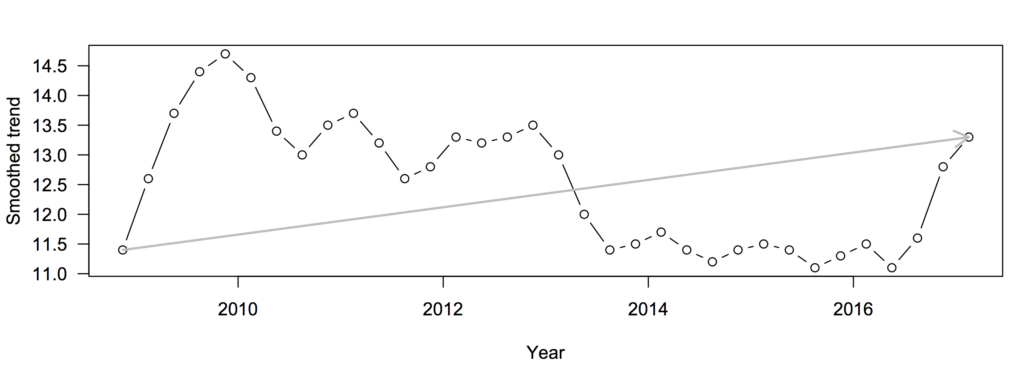
The increase is, again 17%. Taking out the seasonal variation, short-term variation, and sampling noise makes the underlying pattern clearer. NEET increased dramatically in 2009, decreased, and has recently spiked. The early spike may well have been the recession, which can’t reasonably be blamed on any NZ party. The recent increase is worrying, but thinking of it as trend over 9 years isn’t all that helpful.
